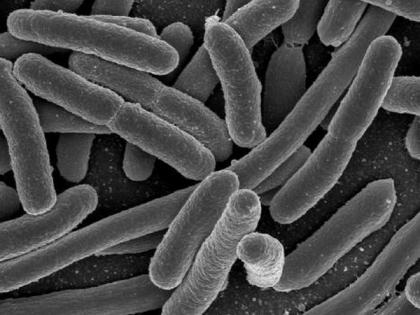Methane-eating 'borgs' have been assimilating earth's microbes: Study
By ANI | Published: October 20, 2022 09:46 AM2022-10-20T09:46:23+5:302022-10-20T15:20:02+5:30
In Star Trek, the Borg are a ruthless, hive-minded collective that assimilate other beings with the intent of taking over the galaxy. Here on the nonfictional planet Earth, 'Borgs' are DNA packages that could help humans fight climate change.

Methane-eating 'borgs' have been assimilating earth's microbes: Study
In Star Trek, the Borg are a ruthless, hive-minded collective that assimilate other beings with the intent of taking over the galaxy. Here on the nonfictional planet Earth, 'Borgs' are DNA packages that could help humans fight climate change.
Last year, a team led by Jill Banfield discovered DNA structures within a methane-consuming microbe called Methanoperedens that appear to supercharge the organism's metabolic rate. They named the genetic elements "Borgs" because the DNA within them contains genes assimilated from many organisms.
In a study published today as the cover item in Nature, the researchers describe the curious collection of genes within Borgs and begin to investigate the role these DNA packages play in environmental processes, such as carbon cycling.
Methanoperedens are a type of archaea (unicellular organisms that resemble bacteria but represent a distinct branch of life) that break down methane (CH4) in soils, groundwater, and the atmosphere to support cellular metabolism. Methanoperedens and other methane-consuming microbes live in diverse ecosystems around the world but are believed to be less common than microbes that use photosynthesis, oxygen, or fermentation for energy. Yet they play an outsized role in Earth system processes by removing methane -- the most potent greenhouse gas -- from the atmosphere.
Methane traps 30 times more heat than carbon dioxide and is estimated to account for about 30 percent of human-driven global warming. The gas is emitted naturally through geological processes and by methane-generating archaea; however, industrial processes are releasing stored methane back into the atmosphere in worrying quantities.
Banfield, a faculty scientist at Lawrence Berkeley National Laboratory (Berkeley Lab) and professor of Earth & Planetary Science and Environmental Science, Policy & Management at UC Berkeley, studies how microbial activities shape large-scale environmental processes and how, in turn, environmental fluctuations alter the planet's microbiomes. As part of this work, she and her colleagues regularly sample microbes in different habitats to see what interesting genes microbes are using for survival, and how these genes might affect global cycles of key elements, such as carbon, nitrogen, and sulfur. The team looks at the genomes within cells as well as the portable packets of DNA known as extra-chromosomal elements (ECEs) that transfer genes between bacteria, archaea, and viruses. These elements allow microbes to quickly gain beneficial genes from their neighbors, including those that are only distantly related.
While studying Methanoperedens sampled from seasonal wetland pool soil in California, the scientists found evidence of an entirely new type of ECE. Unlike the circular strands of DNA that make up most plasmids, the most well-known type of extra-chromosomal element, the new ECEs are linear and very long -- up to one-third the length of the entire Methanoperedens genome. After analyzing additional samples from underground soil, aquifers, and riverbeds in California and Colorado that contain methane-consuming archaea, the team uncovered a total of 19 distinct ECEs they dubbed Borgs. Using advanced genome analysis tools, the scientists determined that many of the sequences within the Borgs are similar to the methane-metabolizing genes within the actual Methanoperedens genome. Some of the Borgs even encode all the necessary cellular machinery to eat methane on their own, so long as they are inside a cell that can express the genes.
"Imagine a single cell that has the ability to consume methane. Now you add genetic elements within that cell that can consume methane in parallel and also add genetic elements that give the cell higher capacity. It basically creates a condition for methane consumption on steroids, if you will," explained co-author Kenneth Williams, a senior scientist and Banfield's colleague in Berkeley Lab's Earth and Environmental Sciences Area. Williams led research at the Rifle, Colorado site where the best characterized Borg was recovered, and is also chief field scientist of a research site on the East River, near Crested Butte, Colorado, where some of Banfield's current sampling takes place.
The East River field site is part of the Department of Energy's Watershed Function Scientific Focus Area, a multidisciplinary research project led by Berkeley Lab that aims to link microbiology and biochemistry with hydrology and climate science. "Our expertise is bringing together what are often thought of and treated as completely disparate fields of inquiry -- big science that links everything from genes all the way up to watershed and atmospheric processes."
( With inputs from ANI )
Disclaimer: This post has been auto-published from an agency feed without any modifications to the text and has not been reviewed by an editor
Open in app